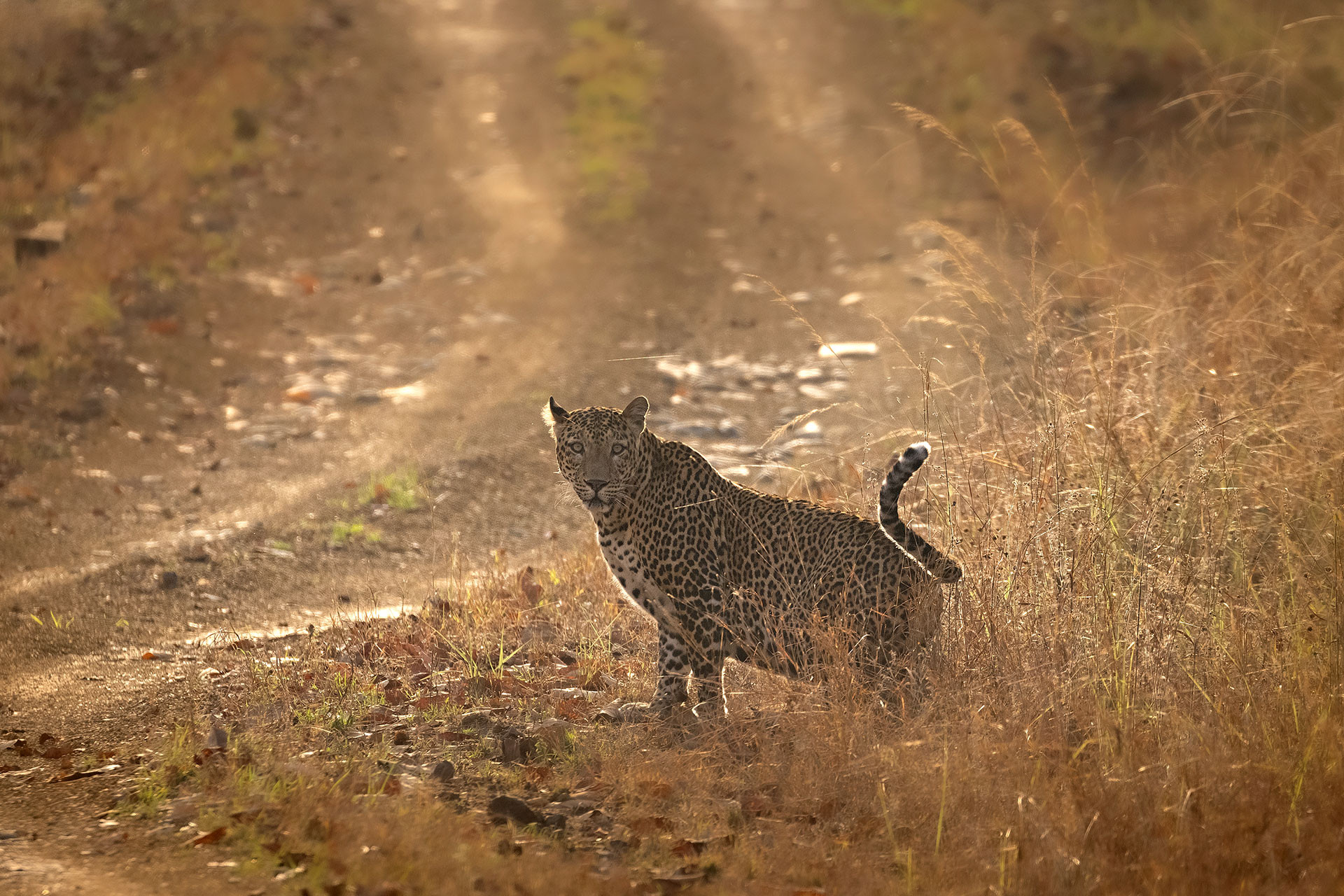Satpura Tiger Reserve is the largest tiger reserve in the state of Madhya Pradesh, comprising three protected areas, namely Satpura National Park, Bori Wildlife Sanctuary and Pachmarhi Sanctuary. Bori has a unique history of being the oldest reserve forest in the country. Captain James Forsyth, a British Army officer from the Madras Staff Corps, explored this region in the 1860s, and it was under him that Bori got declared as a reserve forest in 1869. Later, Bison Lodge in Pachmarhi became the first office of the forest department in the country. Satpura was declared a tiger reserve only in the year 2000. In its current form, the reserve, including the buffer zones, is spread across 2,200sq.km. of classic central Indian highlands. The park falls within the Satpura-Maikal landscape, which is one of the largest unbroken tiger habitats in the world. Satpura has a well-connected forest corridor with Pench Tiger Reserve and Melghat Tiger Reserve, making it critical for the long-term viability of tigers in the country.
Biodiversity hotspot
Satpura is blessed with a diverse landscape. Mountains, rivers, dry forests, evergreen patches, meadows, gorges and cliffs all combine to form one of the most exciting tiger habitats in Central India. The Satpura Mountains act as a bridge between the Western Ghats and the Eastern Himalayas. That is why species like the Malabar Giant Squirrel and Malabar Whistling Thrush are only found in Satpura in Central India. Apart from fauna, there are several floral species that are endemic to the Western Ghats or Eastern Himalayas that are also found in Satpura. These forests are home not just to tigers but also to Sloth Bears, Indian Leopards, Wild Dogs, large herds of Indian Gaur, Sambar, Four-horned Antelope, Indian Muntjac and many small mammals. The tiger reserve is a birding paradise with over 270 species recorded in an annual bird survey conducted in 2018. Some attractive birds include the Indian Skimmer, Black-crested Bulbul, Spotted Creeper, Black-capped Kingfisher, Changeable Hawk Eagle, Osprey and Painted Snipe, to name a few. The national park has several waterways, and they harbour the first documented population of Eurasian Otters in Central India. The forest department successfully reintroduced the critically endangered Hard Ground Barasingha in the park from Kanha National Park.
You may also like to read
Seasons in Saptura
Satpura is a mixed deciduous forest with classic central Indian trees like the Crocodile Bark Tree, Teak, East Indian Satinwood, Indian Ebony, Indian Ghost Tree and Axle Wood Tree. It is the only park in Central India where Teak and Sal forests meet; the Pachmarhi Sanctuary largely comprises Sal forests. The Satpura mountains are a freshwater source with multiple rivers originating and draining into the Tawa-Denwa basin. Rivers Son, Bhadra, Nagduari, Malini, Koti and Baingana flow into the Tawa reservoir, which covers an area of over 250sq.km. The large reservoir is at its highest water level after the monsoon and is used for irrigating crop fields in the Hoshangabad district. As the wheat season progresses, the water in the reservoir depletes, and new succulent grasses emerge. During this time, large herds of Indian Gaur, Spotted Deer, Sambar and Wild Boar can all be seen grazing at the water’s edge. The leaves start to fall by December, and most trees are leafless by March-April.
Soon after, the flowering season begins, and this is when the forest shows its hues and colours. Some mountain slopes are bright orange with flowers of the Flame of the Forest, and others are fluorescent green with flowers of the East Indian Satinwood. The Red Silk Cotton tree is a favourite among nectar-feeding birds and frugivorous animals alike. And finally, when the Mahua flowers, it is irresistible for all herbivores, and interestingly also for the Sloth Bear. Before the onset of the monsoon is the fruiting season, with Mango, Jamun, Khirni, Mahua and other forest trees all in fruit. Once the rain starts to fall, the cycle of regeneration begins, with the seeds dispersed at a time when water is plenty.
Village Relocation
Until recently, the entire Satpura Tiger Reserve was dotted with villages. The residents, mostly indigenous communities, were largely dependent on forest produce for their livelihood. They would collect non-timber forest products such as different types of flowers, fruits, herbs and honey, which they would then sell in the market. They would also do subsistence farming on small land parcels, planting wheat, maize, rice and some millets depending on the season, and this would help them store grain to eat for the entire year. Livestock was another source of income. All these human activities put significant pressure on the forest and its denizens. Over the last decade, the forest department has been relocating these villages to alleviate this pressure. The Satpura Tiger Reserve has had one of the most successful relocation programmes, with almost 40 villages relocated from within the reserve to its periphery. The habitat restoration in these erstwhile villages has enabled tremendous repopulation of herbivores and carnivores.
Exclusive tourism
Satpura National Park and Bori Wildlife Sanctuary offer a delightful experience for tourists, where there is a deliberate attempt to focus on a low-volume but a high-quality wildlife experience. Patrons can enjoy serene non-motorised activities like walking safaris or river canoeing. The tiger reserve management has introduced a camping program that can be done in an expedition format or as an overnight camping experience. The jeep drives, of course, are the best way of sighting big mammals like leopards, Sloth Bears, Wild Dogs, and even tigers. Night safaris offer guests the unique experience of observing rarely seen nocturnal animals like civets, porcupines, jungle cats and owls. The Rusty Spotted Cat, the world’s smallest wild cat species, is also seen here. Apart from wildlife, there are also cultural experiences where guests can interact with indigenous communities along the periphery of the park.
The Satpura National Park, Bori Wildlife Sanctuary and Pachmarhi Sanctuary together form a unique ecosystem, with each day spent here bringing a new experience. The Satpura Tiger Reserve was recently added to the tentative list of UNESCO natural heritage sites in India.
Best time to visit—October to April
Places to stay—Reni Pani Jungle Lodge, Bori Safari Lodge, Forsyth Lodge, Denwa Backwater Escape, MPT Bison Resort
















